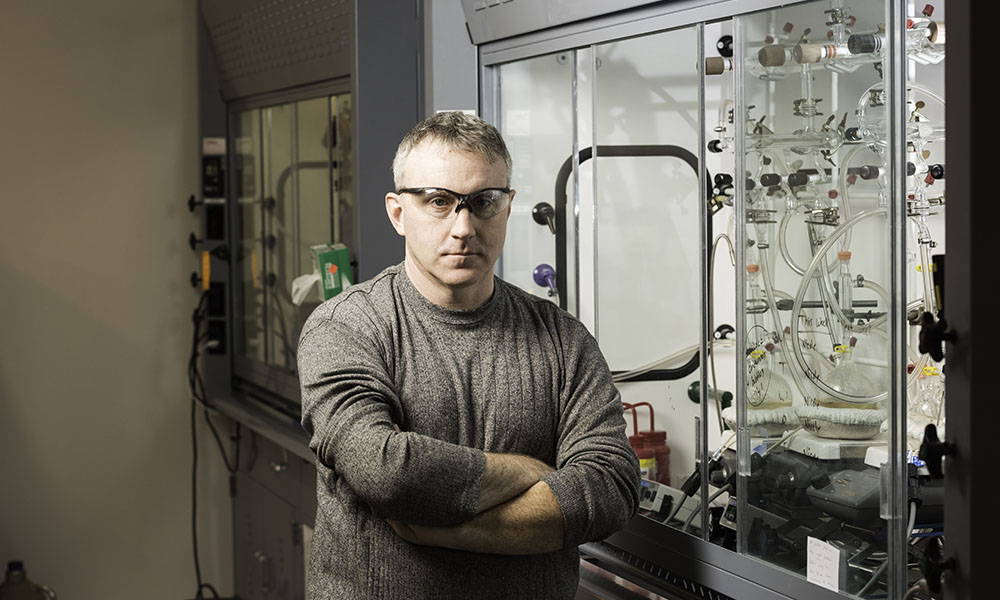Department News
Rochester researchers join national initiative to advance quantum science

Department of Energy grant recognizes the University’s long history of quantum research
Todd Krauss, chair of the Department of Chemistry at the University of Rochester, and his fellow researchers are joining a $73 million initiative, funded by the US Department of Energy, to advance quantum science and technology. Krauss’s project, “Understanding coherence in light‐matter interfaces for quantum science,” is one of 29 projects intended to help scientists better understand and to harness the “quantum world” in order to eventually benefit people and society.
“It’s exciting to see the University recognized for its work in the emerging field of quantum information science,” says Krauss.
The University has a long history in quantum science, dating back to physicist Leonard Mandel—considered a pioneer in quantum optics—in the 1960s. And Krauss says he and his colleagues are now building on the work of Mandel and other giants at Rochester, as well as leveraging the talents of the University’s current crop of quantum researchers.
Quantum science “the next technological revolution”
“Quantum science represents the next technological revolution and frontier in the Information Age, and America stands at the forefront,” said Secretary of Energy Jennifer M. Granholm as part of the DOE’s announcement of the funding. “At DOE, we’re investing in the fundamental research, led by universities and our National Labs, that will enhance our resiliency in the face of growing cyber threats and climate disasters, paving the path to a cleaner, more secure future.”
One of the principle challenges in this line of research, explains Krauss, is that quantum states of matter are typically stable only at temperatures below 10 degrees Kelvin; that’s roughly –441 degrees Fahrenheit. By comparison, the coldest recorded temperature on Earth was –128.6 at Russia’s Vostok station in Antarctica in 1983. If stability can be achieved at room temperature, then the benefits of quantum applications can be realized on a broader scale.
Faster computers, better sensors, more secure systems
More robust quantum states could yield exponentially faster computers, extremely responsive chemical or biological sensors, as well as more secure communication systems, an area that Krauss’s project is focused on. “In quantum state communications, it will be possible to know when someone else is monitoring your messaging,” says Krauss.
Krauss is being awarded $1.95 million over three years for his project on light-matter interfaces. Basically, says Krauss, “we’re sticking colloidal nanoparticles into optical cavities in order to interact the nanoparticles with the quantum-light of the cavity.” The work will be divided among four researchers:
- Krauss will focus on materials synthesis, characterization and spectroscopy.
- Nick Vamivakas, a professor of quantum optics and quantum physics at the University of Rochester’s Institute of Optics, will work on cavity fabrication and quantum optics measurements.
- Pengfei Huo, assistant professor of chemistry at the University of Rochester, will be the theorist of the group and will provide critical modeling of experiments.
- Steven Cundiff, professor of physics at the University of Michigan, will take state-of-the-art, nonlinear, ultrafast spectroscopic measurements.
“We are excited to be taking the field of quantum optics in completely new and uncharted directions with our studies of the quantum optics of nanoparticles,” says Krauss.
Related links:
